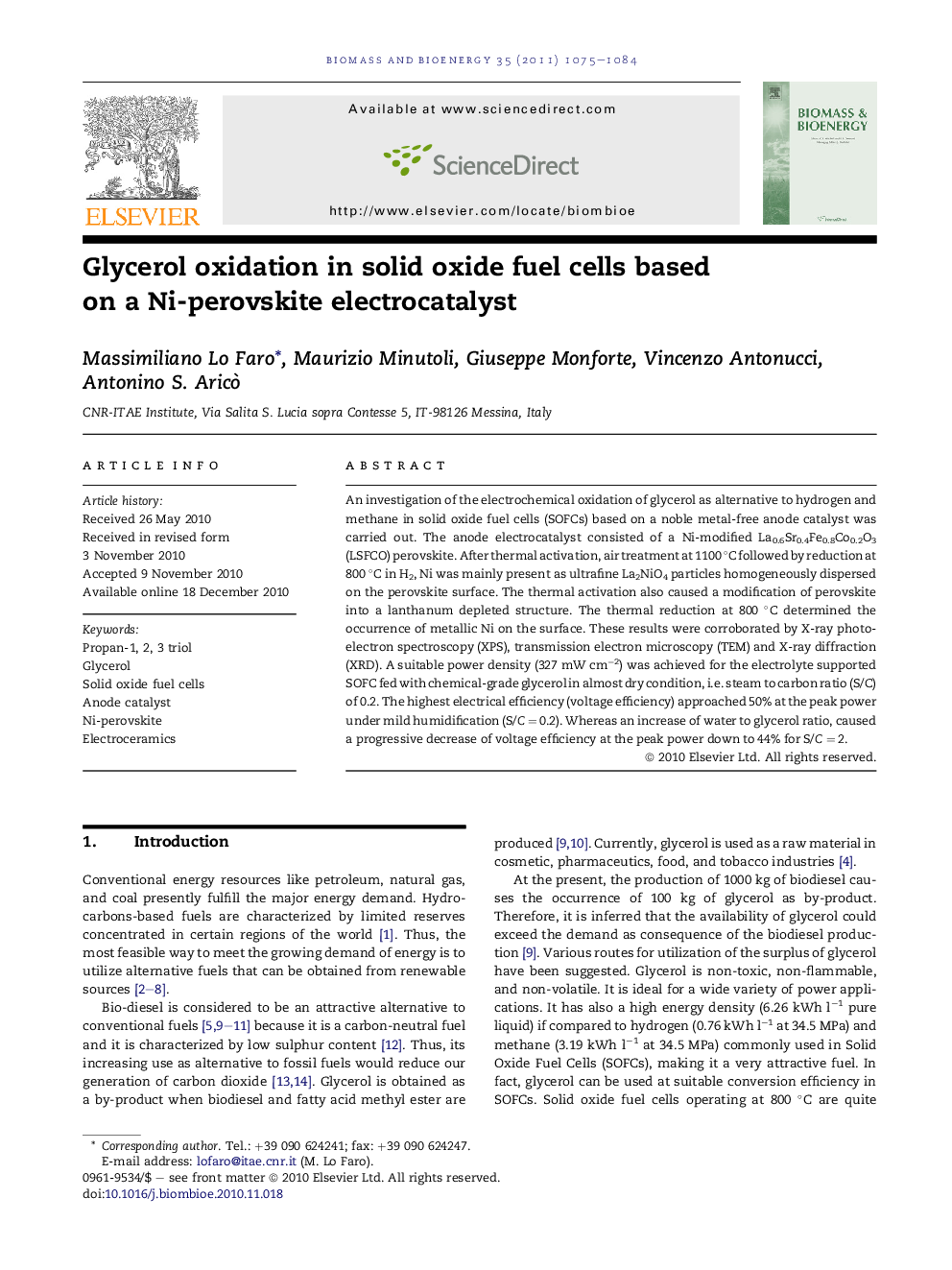| Article ID | Journal | Published Year | Pages | File Type |
|---|---|---|---|---|
| 10393806 | Biomass and Bioenergy | 2011 | 10 Pages |
Abstract
An investigation of the electrochemical oxidation of glycerol as alternative to hydrogen and methane in solid oxide fuel cells (SOFCs) based on a noble metal-free anode catalyst was carried out. The anode electrocatalyst consisted of a Ni-modified La0.6Sr0.4Fe0.8Co0.2O3 (LSFCO) perovskite. After thermal activation, air treatment at 1100 °C followed by reduction at 800 °C in H2, Ni was mainly present as ultrafine La2NiO4 particles homogeneously dispersed on the perovskite surface. The thermal activation also caused a modification of perovskite into a lanthanum depleted structure. The thermal reduction at 800 °C determined the occurrence of metallic Ni on the surface. These results were corroborated by X-ray photoelectron spectroscopy (XPS), transmission electron microscopy (TEM) and X-ray diffraction (XRD). A suitable power density (327 mW cmâ2) was achieved for the electrolyte supported SOFC fed with chemical-grade glycerol in almost dry condition, i.e. steam to carbon ratio (S/C) of 0.2. The highest electrical efficiency (voltage efficiency) approached 50% at the peak power under mild humidification (S/C = 0.2). Whereas an increase of water to glycerol ratio, caused a progressive decrease of voltage efficiency at the peak power down to 44% for S/C = 2.
Related Topics
Physical Sciences and Engineering
Chemical Engineering
Process Chemistry and Technology
Authors
Massimiliano Lo Faro, Maurizio Minutoli, Giuseppe Monforte, Vincenzo Antonucci, Antonino S. Aricò,
